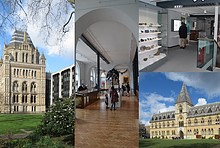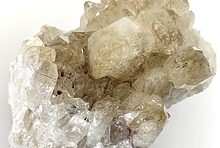Learning CenterWhat is a mineral?The most common minerals on earthInformation for EducatorsMindat ArticlesThe ElementsThe Rock H. Currier Digital LibraryGeologic Time
搜索矿物的性质搜索矿物的化学Advanced Locality Search随意显示任何一 种矿物Random Locality使用minID搜索邻近产地Search Articles搜索词汇表更多搜索选项
╳Discussions
💬 Home🔎 Search📅 LatestGroups
EducationOpen discussion area.Fakes & FraudsOpen discussion area.Field CollectingOpen discussion area.FossilsOpen discussion area.Gems and GemologyOpen discussion area.GeneralOpen discussion area.How to ContributeOpen discussion area.Identity HelpOpen discussion area.Improving Mindat.orgOpen discussion area.LocalitiesOpen discussion area.Lost and Stolen SpecimensOpen discussion area.MarketplaceOpen discussion area.MeteoritesOpen discussion area.Mindat ProductsOpen discussion area.Mineral ExchangesOpen discussion area.Mineral PhotographyOpen discussion area.Mineral ShowsOpen discussion area.Mineralogical ClassificationOpen discussion area.Mineralogy CourseOpen discussion area.MineralsOpen discussion area.Minerals and MuseumsOpen discussion area.PhotosOpen discussion area.Techniques for CollectorsOpen discussion area.The Rock H. Currier Digital LibraryOpen discussion area.UV MineralsOpen discussion area.Recent Images in Discussions
PhotosAchroite - East Hampton, Middlesex Co., Connecticut, USA
21st Feb 2011 14:27 UTCHarold Moritz 🌟 Expert
Nice crystals on smoky quartz. Based on the quality and the color of the elbaites, this piece is almost certainly from the GIllette Quarry in the Haddam Neck section of Haddam, which was active when this specimen was collected. Old specimens from there are commonly labeled as coming from East Hampton, even Cameron et al (1954) Pegmatite Investigations New England had it wrong. The blue termination on the flat end of at least one crystal has been seen there (http://www.mindat.org/photo-288651.html) and the association of elbaites penetrating smoky quartz is very characteristic of that locality. It looks like there may be a fibrous muscovite (schernikite) also penetrating the quartz in the lower part of the photo, if so, of if there is schernikite elsewhere on the specimen, this would be diagnostic as Gillette.
21st Feb 2011 17:42 UTCUwe Kolitsch Manager
21st Feb 2011 19:14 UTCPeter Cristofono
22nd Feb 2011 00:33 UTCHarold Moritz 🌟 Expert
22nd Feb 2011 01:56 UTCPeter Cristofono
23rd Feb 2011 13:45 UTCHarold Moritz 🌟 Expert
BTW, attached is a snapshot of beryls from the Brainerd quarries on display at Yale's Peabody Museum.
Fritz
23rd Feb 2011 19:31 UTCDavid Bernstein Expert
Do you need me to locate the Cook Bros. Gem Mine? You know I can find anything. I'm up to the challenge!!!
23rd Feb 2011 23:10 UTCHarold Moritz 🌟 Expert
No, it was possibly somewhere near the Swanson Mine (or could have become it later), and you dont want to go there....:)
It's all very vague and lost to history, I've never seen or heard of a specimen from there anyway.
Fritz
21st May 2019 22:47 UTCHarold Moritz 🌟 Expert
I'm revising where this piece is from and think it may in fact be East Hampton after all.
Based on the description from Bastin 1910 I think it is the old, small Eureka Quarry:
https://www.mindat.org/loc-253775.html
"Pockets or cavities are irregularly distributed through this pegmatite. The largest are 7 or 8 inches in diameter, and some of them, especially the smaller ones, contain tourmalines of gem quality. In color these are usually grass to olive green, and many show very perfect terminations. Some are of the variety achroite, being colorless or very pale green or pink. Near the pockets opaque or translucent green tourmalines, granular aggregates of lepidolite, and muscovite bordered by lepidolite or in parallel intergrowth with it, are common."
Description sounds a lot like your specimen, especially as the pockets were pretty small, so the specimens would be also.
I thought this might have been an old description of Gillette Quarry, based on similar minerals, but he also describes it in this document and other details given, like 1.25 miles from the river, clearly make it not Gillette. Apparently did not operate for very long so never made it into many later pegmatite documents. I bet there are some pieces floating around from it that are mislabeled as Gillette. Given its general proximity to Swanson, it may also be the very poorly documented "Cook Brothers Gem Mine" but I doubt that will ever be confirmed.
22nd May 2019 00:29 UTCPeter Cristofono
According to the dealer's label, this specimen was field collected by Warren Johansson (1921-2014) sometime between 1939 to the early 1940s, which was long after Bastin's (1910) description of the Eureka quarry, and after Shannon (1920) reported the site was not worth visiting. So while it's possible that Johansson discovered some new pocket material at the Eureka, it could be that Gillette is the source of this specimen after all and mislabeled "East Hampton." What do you think?
22nd May 2019 01:47 UTCKevin Conroy Manager
22nd May 2019 13:32 UTCHarold Moritz 🌟 Expert
In 1920 Shannon said the Swanson mine was not worth visiting either! It's possible that the site was worked again during WWII (as was Swanson - as the Anderson Mica Mine #1 - which then became a much better site) because the nearby Worth quarry (Mr. Worth worked a lot of places between the wars and during WWII, including the State Forest Quarry #1) was operated then and many other places were opened or at least investigated then, as you know. They didnt all end up in Cameron. While in principle I agree with Kevin, I have seen so many mislabeled old specimens to have a healthy skepticism, and there is usually something about the label or date of the find, etc. that explains the error. Because the Haddam Neck section of town of Haddam, where the Gillette Quarry is located, is physically separated from the rest of the town of Haddam by the Connecticut River and is accessed via roads from adjacent East Hampton, Gillette got frequently incorrectly placed in the latter town on labels and articles - see Cameron (and Jeff Scovil's article in Min Record)! Until I read the old description of Eureka by Bastin, I was unaware there was even a pockety pegmatite in East Hampton, small though it is. Your specimen fits his description very well, especially the mention of achroite, which is actually rare at Gillette. So now that I know it has a viable East Hampton source, I no longer see a reason to change the locality and find it very cool that an apparently rare specimen from this small peg is preserved! Is the other achroite specimen in the Gillette photo gallery also from there?




版权所有© mindat.org1993年至2024年,除了规定的地方。 Mindat.org全赖于全球数千个以上成员和支持者们的参与。
隐私政策 - 条款和条款细则 - 联络我们 - Report a bug/vulnerability Current server date and time: 2024.4.27 20:54:05
隐私政策 - 条款和条款细则 - 联络我们 - Report a bug/vulnerability Current server date and time: 2024.4.27 20:54:05












